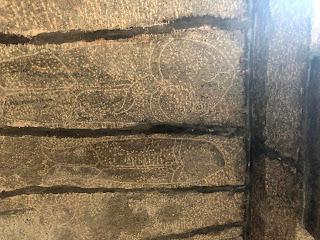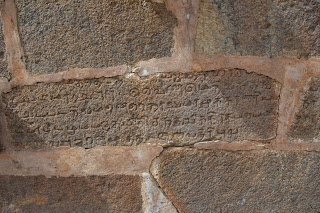Another important temple in Cheranmahadevi is the ancient and elegant Ammainathar temple on the banks of the Thamirabarani. It is one the Navakailasa temples - the nine ancient Sivan temples along the Thamirabarani where the Moolavar is named Kailasanathar and each is dedicated to one of the Navagrahams. This is the second most important. We already saw one in Srivaikuntham. This temple is dedicated to Chandran or Thingal, the Moon God.
Legend says that this temple is 1100 years old. That dating appears to be correct, as you find both Vatteluthu (வட்டெழுத்து) and Tamil inscriptions here. I hope you know the difference. The Cholans hardly ever wrote in Vatteluthu. They preferred the script that we today call Tamil script. The Pandians before the Chola conquest preferred the Vatteluthu. So this temple must have been built around the time of the Chola conquest in the mid 10th century. This temple is covered with inscriptions. It looks like the Pandians built this temple in the early 10th century before the Chola invasion and the Cholans expanded it. There is evidence that Kulothungan I renovated it in the late 11th century. Although the later dynasties did make minor contributions they appear to be subtle. Look at the figure of the goddess on the Vimanam of the Amman Sannidhi. It is definitely from the 15th or 16th centuries but it is incorporated into the overall structure very tastefully.
Beautiful temple. We loved the subtle elegance of the pre Nayakkan era. Although I love and admire what the Nayakkans did with their animated sculptures and colourful and crowded gopurams, I also admire the softness of the Pandian and Chola styles that we see in abundance here.
There are other ancient temples in Cheranmahadevi which we did not have the time to visit.
Visited August 2019 - Base Thirunelveli




























































